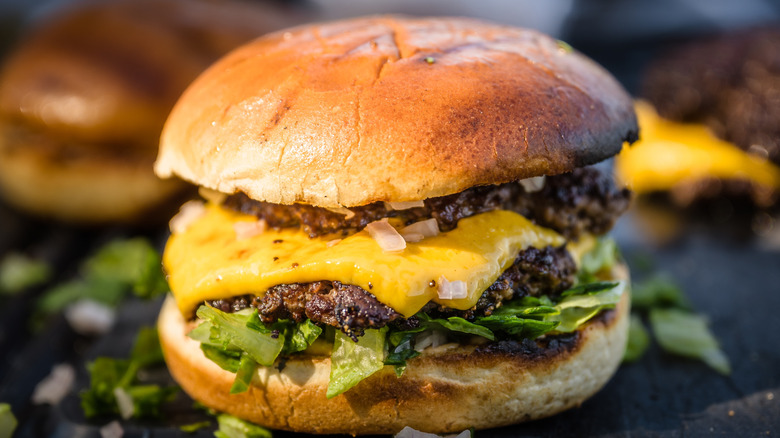The Type Of Pan You Should Never Use To Make Smash Burgers
It's time to start cooking dinner and you're making smash burgers for the first time. You reach for a pan. Normally, you opt for your trusty cast iron, but smash burgers are, well, smashed. What if all that smashing action makes the patty stick?
Nope, don't do it. Don't grab that nonstick skillet. Nonstick cookware is good for many things — like eggs, fish, and other delicate foods — but sometimes the traditional pans simply make better food. And smash burgers are a case in point. Using nonstick cookware is a major smash burger mistake.
The key to a good smash burger is a crispy, well-browned crust. It's what sets them apart from their thicker, softer kin. That browned crust on the meat comes from the Maillard reaction, a chemical reaction that happens when proteins are exposed to high temperatures. To get the benefits of the Maillard reaction — like complex flavors and textures — you'll need a piping hot pan. Some types of pans, like cast iron and stainless steel, can handle the heat. Nonstick cookware can't.
Why you shouldn't use nonstick cookware for a smash burger
You might be familiar with the controversy surrounding nonstick cookware. (If not, it might be time to read up and toss out your old nonstick pans.) Up until 2014, the chemical coating contained PFOA, a "forever chemical" linked to health problems like cancer and kidney disease. Nowadays, the chemicals used for nonstick cookware are safer — unless you turn the heat up too high. Most nonstick coatings start to degrade at somewhere between 400 and 500 degrees Fahrenheit. As they degrade, they release noxious gases.
The Maillard reaction occurs at around 300 degrees Fahrenheit, so theoretically you should be able to sear a smash burger and still stay safe. But just because you can heat your pan up high enough to get a well-browned crust doesn't mean you should. Nonstick pans aren't meant for high heat, period. It's better to stay on the safe side and keep the temperatures low.
Still worried about sticky burgers? As long as you take a few precautions, you will be just fine. Remember to preheat your pan and use a splash of high-heat oil for cast iron and stainless steel. Don't start panicking if your burger doesn't lift right away, either. A little sticking helps develop that all-important crust. Have faith and keep an eye on the patty: It will release when it's ready.

